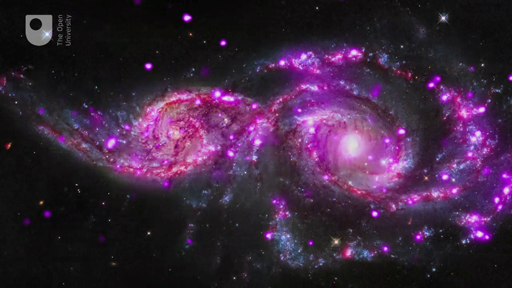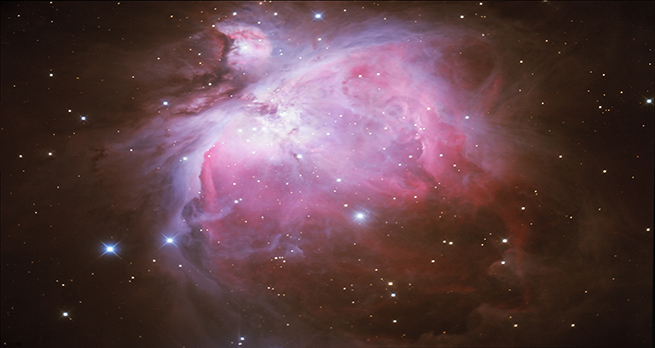3.2.1 Different types of galaxy
Galaxies are categorised according to their apparent shape.

Transcript
Galaxy shapes are typically divided into elliptical, spiral or irregular. The shape of a galaxy gives a clue to the age and types of star within the galaxy.
Spiral galaxies have a central bulge of stars surrounded by a disk that contains ‘arms’ which form a spiral structure. Stars in the bulge of a spiral galaxy tend to be older and redder than the rest.
There’s also a much fainter, roughly spherical stellar halo encompassing the disc. An example of a spiral galaxy is one of our nearest neighbours, the Andromeda Galaxy.
Barred spiral galaxies are spiral galaxies with a bar of stars across the middle of the galaxy. The Milky Way is thought to be a barred spiral galaxy.
Elliptical galaxies don’t show any structure, but have a smooth ellipsoidal shape, appearing as large spherical or elliptical balls of stars.
Irregular galaxies are those with no defined shape. Many irregular galaxies probably used to be spiral or elliptical until they were disrupted by the gravitational pull of neighbouring galaxies.
Edwin Hubble proposed a ‘tuning fork’ classification of galaxies that is still in use today, shown in Figure 8. The Milky Way Galaxy is somewhere on the barred spirals fork.

